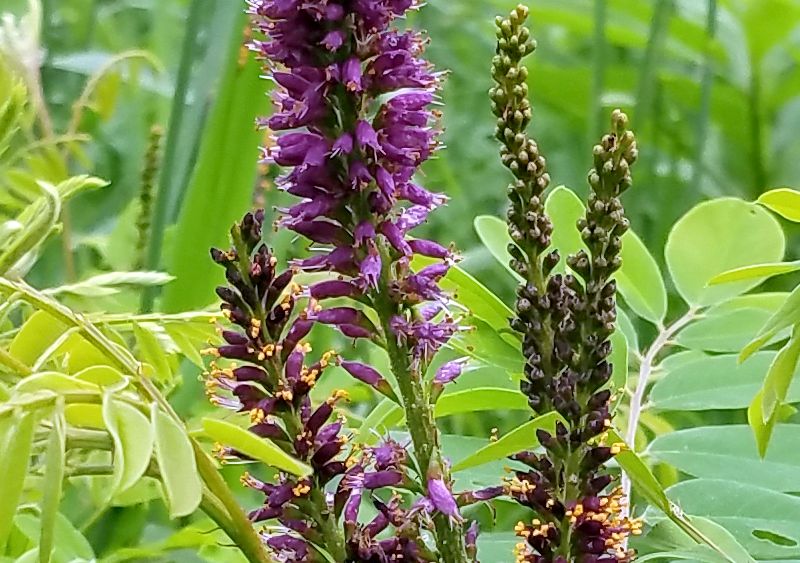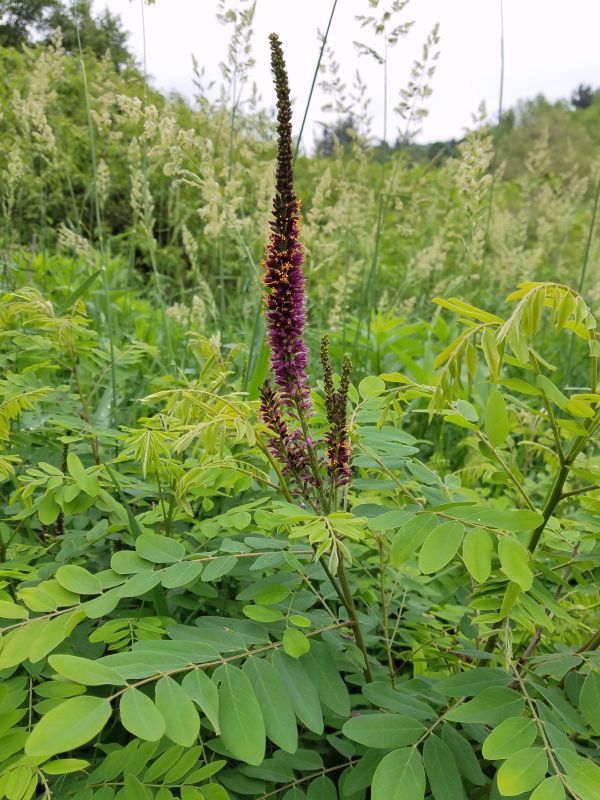
Here’s a plant you don’t see every day in Pennsylvania.
False Indigo or Indigobush (Amorpha fruticosa) is a shrub-sized member of the legume family (Fabaceae) native to North America. It normally occurs from south central Canada to northern Mexico but it’s cultivated for gardens and has escaped to the wild in New England and the Pacific Northwest.
Related to leadplant (Amorpha canescens), Illinois Wildflowers describes false indigo as “Leadplant on steroids.”
The escapees have caused problems. False indigo is easy to grow and it tends to form dense thickets. Since each plant is 4-18 feet tall and even wider than tall, it’s a problem where it’s unwanted. Connecticut and Washington state have listed it as invasive.

The flowers are unusual for the pea family. The plant’s 3-8 inch racemes are covered in small purple or dark blue flowers with yellow anthers sticking out. Unlike normal pea flowers false indigo’s have only one lip, hence the genus name for the plant: Amorpha, meaning formless or deformed.
Its common name is “false” indigo because it produces such a tiny amount of indigo pigment.
See a list of bees and moths that love false indigo and read more about it here on the Illinois Wildflowers website.
Dianne Machesney photographed it last weekend at Hillman State Park in Washington County, PA. It would be a Life Plant for me.
(photo by Dianne Machesney)
Is there another flower with the name “false indigo?” I have a plant that I got at Beechwood that is also called false indigo that looks nothing like the pictures you show. It is almost finished blooming in my garden.
Yes there is: Blue False Indigo (Baptisia australis). See http://www.missouribotanicalgarden.org/PlantFinder/PlantFinderDetails.aspx?kempercode=b660
Too confusing! The one I wrote about is also called Indigobush.